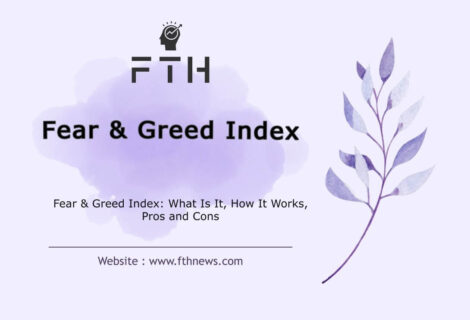
What is Compound Interest: Examples, Pros and Cons, Importance
What is Compound Interes In the dynamic world of finance, understanding the concept of compound interest is crucial for making informed decisions about savings, investments, and loans. In this comprehensive guide, we will explore the intricacies of compound interest, from its definition to its calculation, and shed light on its impact on wealth creation.
What is Compound Interest?
Compound interest is not a mere financial term; it’s a dynamic force that can shape the trajectory of your financial journey. At its core, compound interest goes beyond a simple transaction; it is the engine driving wealth accumulation. In straightforward terms, compound interest is the magic that occurs when your money earns interest not just on the principal amount but also on the interest previously earned. It’s the secret ingredient that propels your funds into a realm of accelerated growth over time.
This financial phenomenon is akin to a compounding magic spell, transforming a static investment into a growing entity. As you watch the numbers multiply, you realize that compound interest is not just a concept; it’s a potent catalyst for financial success. The more time it has to work its magic, the greater the impact on your wealth.
Think of compound interest as a steadfast ally, working tirelessly in the background to maximize the returns on your investments. It’s not a passive bystander; it actively contributes to the compounding effect, turning each interest-earning period into an opportunity for your money to blossom.
In essence, compound interest is your financial accelerator, turning the wheels of wealth creation. Whether you are a seasoned investor or just starting, understanding this force can be the key to unlocking the full potential of your financial endeavors. So, let’s delve deeper into the intricacies of compound and unveil the secrets that make it an indispensable tool for long-term financial growth.
Historical Journey of Compound Interest
The concept of compound interest embarks on a historical voyage, tracing its origins to an era when it was met with skepticism and legal condemnation. In the annals of financial history, compound faced censure under Roman law, being branded as a form of usury. Despite these early challenges, the resilience of this financial principle prevailed, paving the way for its transformative journey through time.
As we traverse through the centuries, influential figures emerge as custodians of compound interest’s evolution. Among them stands Florentine merchant Francesco Balducci Pegolotti, who, in the 14th century, illuminated the intricacies of compound interest in his book “Pratica della mercatura.” His contribution marked a significant milestone in unraveling the complexities of this financial force.
Fast forward to the 17th century, and mathematician Richard Witt takes the stage. In his seminal work “Arithmetic Questions,” published in 1613, Witt solidified the understanding of compound interest, further shaping its role in the world of finance. These pioneering minds laid the foundation for a concept that would become indispensable in shaping financial landscapes globally.
Today, compound interest stands as a linchpin in various financial transactions, orchestrating its influence across a spectrum of monetary engagements. From the humble savings account to intricate investment portfolios, compound is the invisible hand that guides the growth of wealth. Its historical journey, once fraught with skepticism, has transformed into an integral component of modern financial strategies.
In the modern financial realm, compound interest’s echoes resonate in investor decisions, financial institution policies, and the aspirations of those seeking long-term prosperity. Grasping its historical context adds depth to appreciating this enduring force, shaping the financial destinies of individuals and institutions.
How is Compound Interest Calculated?
To harness the full potential of compound interest, one must embark on a journey into its mathematical core. At the heart of this exploration lies a formula, a key that unlocks the potential for financial growth. Understanding this formula is not just a pursuit for mathematicians but an essential endeavor for anyone seeking to navigate the intricacies of wealth accumulation.
The formula for calculating compound interest is elegantly expressed as:
A = P(1 + r/n)nt
Decoding this formula unravels the future value (A) of an investment or loan, accounting for the interplay of principal (P), annual interest rate (r), the number of compounding periods per unit time (n), and the total time the money is invested or borrowed for (t).
Let’s delve into the components of this formula:
- A: This represents the future value of the investment or loan, encompassing both the initial principal and the accrued interest over time. It’s the financial destination where compound interest propels your funds.
- P: The principal amount, the initial investment or loan amount that sets the financial journey in motion. It’s the starting point, the bedrock upon which compound weaves its magic.
- r: The annual interest rate, expressed as a decimal to align with the mathematical intricacies of the formula. It is the rate at which your money earns interest each year.
- n: The number of times interest is compounded per unit of time. This factor introduces the frequency of compounding, whether it occurs annually, quarterly, monthly, or even continuously.
- t: The total time the money is invested or borrowed for, measured in years. This parameter captures the duration of the financial expedition, the timeline over which compound interest exerts its influence.
As you input these values into the formula, a numerical alchemy takes place, unveiling the future financial landscape shaped by the forces of compound interest. The formula’s elegance lies in its ability to distill complex financial dynamics into a concise mathematical expression.
Mastering the intricacies of this formula empowers individuals to make informed decisions about their investments, allowing them to project the potential growth of their wealth over time. It is a roadmap that guides financial decisions, providing clarity in a landscape often clouded by uncertainties.
In the realm of compound , the formula is not just a set of symbols and numbers; it’s the key to unlocking the doors to financial prosperity. As we navigate the complexities of wealth accumulation, this formula stands as a steadfast companion, empowering individuals on their journey toward lasting financial success.
Examples of Compound Interest:
Let’s embark on a numerical journey to illuminate the transformative influence of compound interest. In this scenario, envision a prudent investor depositing $100 into a savings account boasting a 10 percent annual interest rate. As time unfolds, the compounding effect sets in, demonstrating the remarkable power inherent in this financial phenomenon.
In the initial year, the 10 percent interest on the principal amount results in a $10 gain, bringing the total to $110. Now, the magic of compound interest unveils itself. Instead of the subsequent year’s interest being solely based on the initial $100, it is calculated on the enhanced sum of $110, incorporating the interest accrued in the previous year.
As the compounding process iterates over subsequent years, the financial landscape undergoes a metamorphosis:
Year 1:
- Initial Principal: $100
- Interest (10%): $10
- Total: $110
Y 2:
- Initial Principal: $110 (including previous interest)
- Interest (10%): $11
- Total: $121
Year 3:
- Initial Principal: $121
- Interest (10%): $12.10
- Total: $133.10
The beauty lies in the compounding effect, where each year’s interest is calculated not only on the initial principal but also on the cumulative interest earned in preceding years. As time advances, this snowball effect gains momentum, propelling the total amount to unforeseen heights.
In this example, we witness compound interest’s exponential growth. The $100 investment, with a modest 10 percent annual interest rate, evolves significantly over a few years. It’s not just interest on the principal; it’s interest on interest, creating a financial cascade that underscores the significance of long-term investment strategies.
This scenario mirrors the broader financial landscape, where compound interest transforms modest investments into wealth generators. It emphasizes the importance of time in compound interest, highlighting the advantage of allowing investments to compound over extended periods.
Through this numerical narrative, compound interest’s potential becomes tangible, reinforcing the notion that small, consistent investments yield significant financial outcomes over time.
The Power and Advantages of Compound Interest
Compound interest, with its innate ability to generate wealth, serves as a beacon for savvy investors seeking financial prosperity. Delving into its advantages unveils a world of potential, especially in the long term.
High Returns on Savings and Investments:
The true allure of compound interest lies in its capacity to deliver high returns on both savings and investments. By allowing interest to accrue not just on the initial principal but also on previously earned interest, the growth trajectory becomes exponential over time. This compounding effect transforms small, consistent contributions into substantial sums, fostering financial growth that outpaces traditional interest models.
Exponential Growth as a Hedge Against Inflation:
In a financial landscape plagued by the eroding impact of inflation, compound interest stands as a robust defense. The compounding effect ensures that your money doesn’t merely keep pace with inflation but surges ahead. This exponential growth acts as a shield, preserving and enhancing the real value of your investments against the corrosive forces of inflation and the rising cost of living.
The advantages of compound interest are most pronounced when viewed through the lens of a patient, long-term investor. As time becomes a trusted ally, the compounding effect gains momentum, transforming small investments into formidable wealth-building tools.
Navigating Challenges , Disadvantages Compound Interest
While compound interest holds the promise of financial abundance, it’s essential to recognize its potential pitfalls, particularly when navigating the terrain of loans and debts.
Debt Cycle Dangers:
For those making only minimum payments on high-interest loans, compound interest can become a double-edged sword. The compounding effect, instead of working in their favor, amplifies the debt burden. This can lead to a perilous “debt cycle,” where the owed amount snowballs over time, making it challenging to break free from financial constraints.
Understanding these disadvantages empowers individuals to navigate the complexities of compound interest responsibly. It emphasizes the importance of strategic financial planning, particularly when dealing with debts, to ensure that the compounding effect remains an ally rather than an adversary.
Tools for Understanding Compound Interest:
Understanding the intricacies of compound involves more than just comprehending its formula; it requires a set of powerful tools that illuminate its nuances and guide financial decision-making. Here are key navigational aids in the journey to grasp the dynamics of compound interest:
Time Value of Money (TVM):
Definition: At the core of compound interest lies the concept of the Time Value of Money (TVM), acknowledging that a sum of money has a different worth today than in the future. It encapsulates the opportunity cost of tying up funds, emphasizing the importance of time in financial transactions.
Significance: TVM acts as the foundational principle, underscoring why receiving money today is preferred over receiving the same amount in the future. It lays the groundwork for comprehending compound interest as the return on capital over time.
Rule of 72:
Definition: The Rule of 72 is a simplified formula to estimate the number of years required for an investment to double, given a fixed annual rate of return. It is expressed as Years=72Annual Rate of ReturnYears=Annual Rate of Return72.
Significance: This rule provides a quick mental calculation for investors to gauge the potential growth of their investments. It serves as a handy tool, offering a rough estimate of the time required for money to multiply at a given rate.
Compound Annual Growth Rate (CAGR):
Definition: CAGR is a comprehensive measure that represents the geometric progression ratio providing a constant rate of return over a specified time period. It factors in the effect of compounding, offering a more accurate representation of an investment’s growth.
Significance: CAGR acts as a dynamic tool, offering insights beyond simple average returns. It accounts for the fluctuations in returns over different periods, providing a clearer picture of the true growth rate of an investment.
These tools collectively empower individuals to move beyond the theoretical understanding of compound interest. They offer practical insights into the growth trajectory and progression of investments over time. By leveraging these tools, investors can make more informed financial decisions, ensuring that the journey of wealth accumulation aligns with their long-term goals.
Differences Between Compound Interest and Simple Interest:
In the intricate realm of financial transactions, understanding the nuances between simple interest and compound interest is pivotal. These two mechanisms, though rooted in the concept of interest, diverge significantly in their calculation methods and subsequent impact on investments. Let’s embark on a journey to decipher the disparities and shed light on the distinctive characteristics of compound and simple interest.
1. Formulaic Dichotomy:
- Simple Interest Formula: Simple Interest=P×r×t
- Compound Interest Formula: A = P(1 + r/n)nt
The simplicity of the simple interest formula lies in its straightforward calculation based on the principal (P), rate of interest (r), and time (t). In contrast, the compound interest formula introduces the elements of compounding, incorporating not only the initial principal but also the accumulated interest from previous periods, leading to a more intricate yet powerful computation.
2. Growth Dynamics:
In simple interest growth, the trajectory is fairly linear and monotonous. Interest accrues each period based solely on the original principal, resulting in gradual growth.
Contrastingly, compound interest growth unleashes a rapid, exponential ascent. Interest for each period is calculated not just on the principal but also on the accumulated interest, magnifying growth potential over time.
The dynamic nature of compound, where each period’s interest contributes to subsequent calculations, creates a compounding effect propelling wealth accumulation at an accelerated pace compared to simple interest’s linear growth.
3. Applications in Finance:
For simple interest, it’s prevalent in scenarios where interest remains static, like short-term loans or fixed-rate investments.
Compound interest, on the other hand, dominates in long-term investments, savings accounts, and financial instruments with periodic compounding. This facilitates substantial wealth growth over an extended duration.
Choosing between simple and compound hinges on the financial context and desired outcomes. Simple interest suits short-term, straightforward transactions, while compound excels for those aiming at robust, long-term wealth accumulation.
Unraveling the distinctions between these interests provides insights into their diverse applications and implications in the financial tapestry. As investors navigate these intricacies, a nuanced understanding becomes a valuable asset, guiding them toward informed financial decisions tailored to specific goals.
Why is Compound Interest Important?
Compound interest stands as a cornerstone in the realm of finance, offering a pathway to wealth accumulation and financial stability. Its importance reverberates through the corridors of investment strategy, offering a powerful tool for individuals and businesses alike. Let’s delve deeper into why compound is not just important but essential for long-term financial success.
1. Multiplying Capital Over Time:
Compound interest has the remarkable ability to exponentially grow capital over time. By reinvesting both the principal amount and the accrued interest, the initial investment snowballs into a substantial sum. This compounding effect accelerates wealth accumulation, paving the way for financial security and prosperity.
2. Stability Through Growth:
Compound interest provides a stable source of income by fostering consistent growth in investments. Unlike simple interest, which offers linear growth, compound fuels exponential expansion, ensuring a steady influx of returns over the investment period. This stability forms the bedrock of financial planning, offering assurance in an ever-changing economic landscape.
3. Patience and Persistence:
Patience is a virtue often touted in the world of finance, and compound exemplifies this principle. By allowing investments to mature over time without withdrawing the principal, individuals harness the full potential of compounding. The disciplined approach of letting investments grow steadily fosters resilience against market fluctuations and ensures long-term financial well-being.
4. Long-Term Financial Success:
Compound epitomizes enduring financial success. It rewards farsightedness, discipline, and persistence, turning modest investments into substantial wealth. Be it saving for retirement, establishing an emergency fund, or striving for financial independence, compound remains a steadfast ally on the journey to financial freedom.
Essentially, compound is not merely important; it’s indispensable. It embodies prudent financial principles, rewarding those valuing patience and persistence. As individuals embrace compound interest’s power, a realm of possibilities unfolds. Financial aspirations cease to be distant dreams, becoming tangible realities.
In finance’s intricate tapestry, compound emerges as a beacon, guiding towards a brighter, more prosperous future. It testifies to compounding’s enduring might—a force transcending time, molding destinies, and reshaping fortunes along the journey.
Conclusion:
In conclusion, understanding compound interest is essential for anyone seeking financial prosperity. From its historical origins to practical applications and calculations, this guide has provided a comprehensive overview. By grasping the intricacies of compound interest, individuals can make informed decisions, leverage its benefits, and embark on a journey towards lasting financial growth.
FAQ
Compound interest is when the interest on your money earns interest over time, creating a snowball effect for wealth growth.
Compound interest is generally considered good because it accelerates wealth growth. When saving or investing, it works to your advantage, allowing money to grow faster over time.
Compound interest itself is not risky; it’s a principle of growth. However, the associated risk depends on where and how you invest your money.














